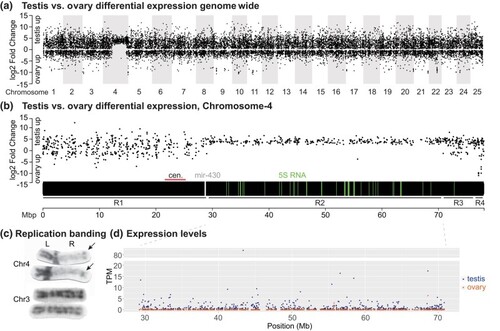Fig. 1.
- ID
- ZDB-FIG-240508-17
- Publication
- Wilson et al., 2024 - A maternal-to-zygotic-transition gene block on the zebrafish sex chromosome
- Other Figures
- All Figure Page
- Back to All Figure Page
|
Testis vs ovary differential gene expression. a) Testis vs ovary differential expression plotted against genomic position across the 25 zebrafish chromosomes. The plot shows unique and specific upregulation of testis genes vs ovary genes on Chr4, the sex chromosome. b) Testis vs ovary differential expression across Chr4. The plot identified 4 distinct regions: R1, with values similar to the bulk of the genome; R2, with testis expression on average much higher than ovary expression; R3, again with values similar to most of the genome; and R4, with some strongly ovary-biased genes and coincident with |

